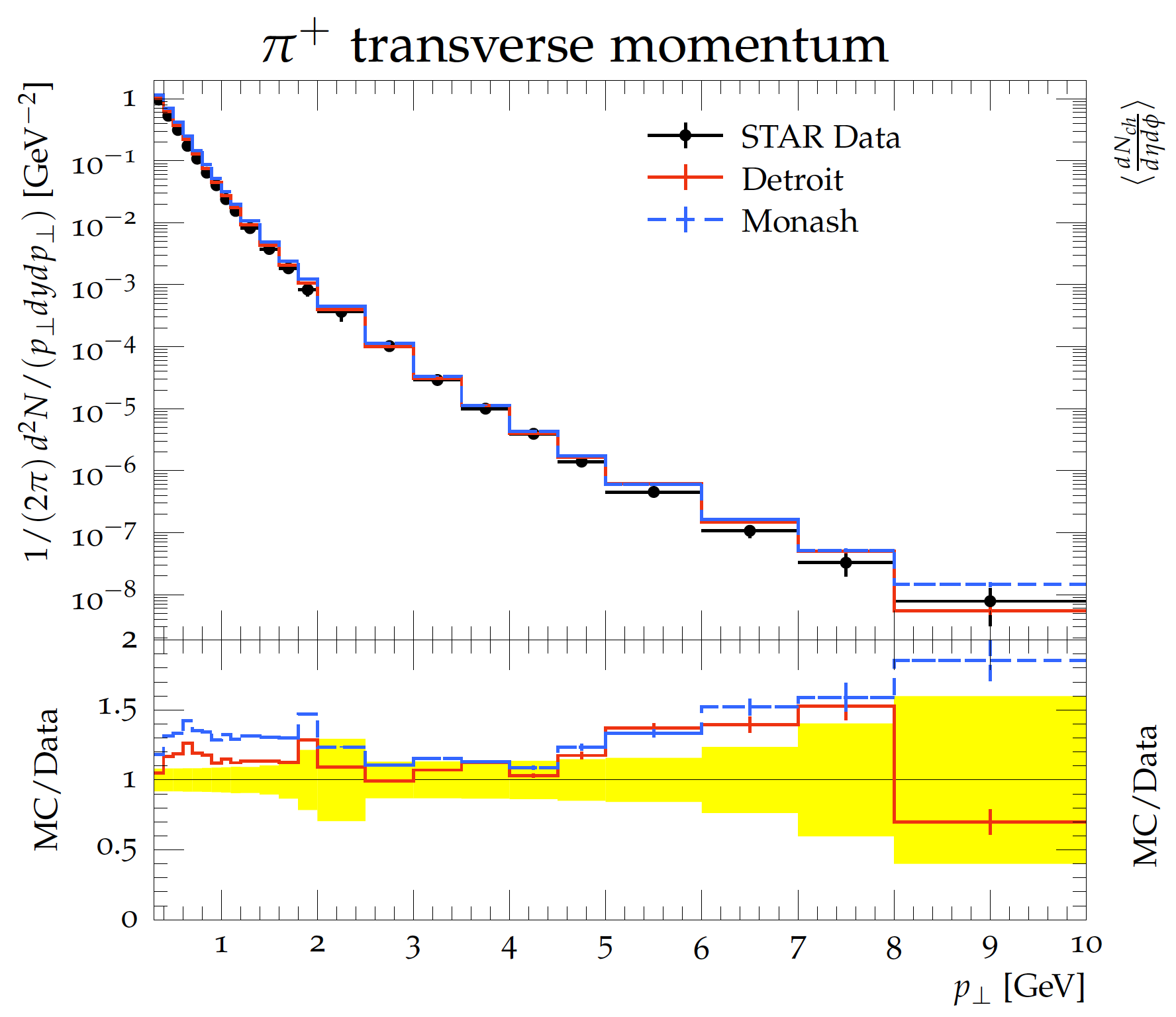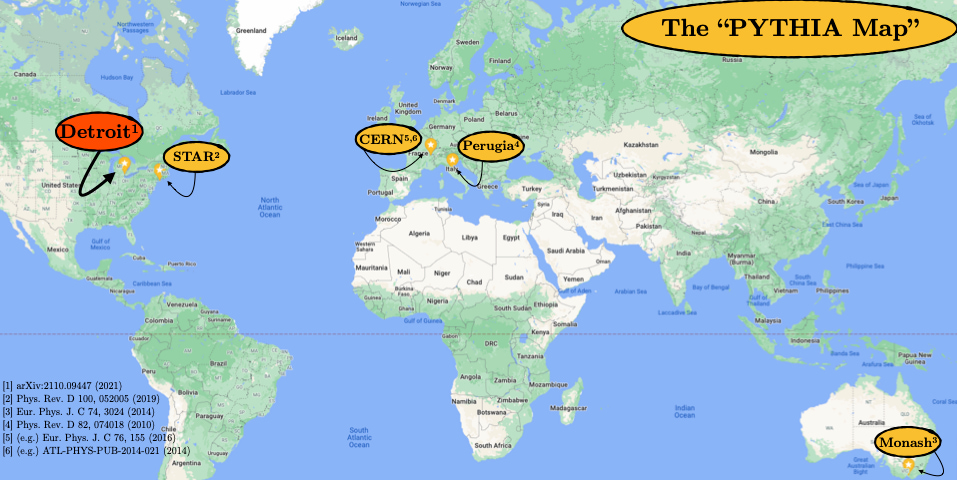Detroit city now on the PYTHIA map
High-energy particle and nuclear physics experiments, like those at the Large Hadron Collider (LHC) at CERN and the Relativistic Heavy-Ion Collider (RHIC) at Brookhaven National Laboratory, rely on state-of-the-art simulations that model the explosive collisions of protons or heavy-ions to understand the produced data.
If you read any published paper in the field, you are more than likely to see a reference to PYTHIA, arguably the most popular simulation package on the market. The inner workings of PYTHIA are controlled by many parameters that need to be fine-tuned with real data so the simulation is accurate and useful for researchers. Several of these PYTHIA "tunes" have been constructed from various research groups all over the world, and a "PYTHIA map" has emerged over the past decade.
The most popular tunes at the LHC come from the researchers at Perugia and Monash and have combined over 1000 literature citations (other widely used tunes are produced by the STAR and CERN experiments).
Physicists in the STAR collaboration, led by postdoctoral fellow Matthew Kelsey and former postdoc Raghav Kunnawalkam Elayavalli with graduate students Isaac Mooney and Veronica Verkest in the relativistic heavy-ion group at Wayne State University, have now produced a new tune for the first time using data from the RHIC and Tevatron, which are lower in energy compared to the LHC. The lower energies at RHIC have made it very hard for PYTHIA to reproduce its data and this is a discrepancy that has been long scrutinized. However, this new tune dubbed the "Detroit tune," is able to reproduce data from the RHIC, Tevatron, and LHC with impressive accuracy, and puts the motor city on the PYTHIA map.

An example comparison of real data from the STAR experiment is shown in figure two as the black points and is compared with the widely used Monash tune (blue dashed line) and the new Detroit tune (red line). The data represent the average number of particles that are produced in proton-proton collisions in coincidence with a jet (collection of collimated particles), and the x-axis shows the data versus the jet transverse momentum (pT).
Data like these are important for the simulation to reproduce as they are the first step in calibrating the modeling of the very complex particle collisions. The bottom panel shows the ratios of the simulations (MC) divided by the data, which highlights the significant improvement of the Detroit tune compared to the popular Monash tune.
The Detroit tune will be invaluable for future research at the RHIC in the coming years, particularly for new experiments coming online such as the new sPHENIX detector which is planned to start taking data in 2023. In their Detroit tune paper, which has been submitted to Physical Review D for peer review (pre-print article arXiv:2110.09447), they also explore the validity of these simulations in new kinematic regions that will be explored at the future Electron-Ion Collider.
Here, large discrepancies are observed that will force researchers to revisit how they formulate the inner workings of these simulations in the coming years to make room for future discoveries.
